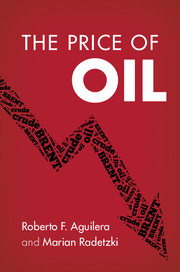Book contents
- Frontmatter
- Contents
- Figures
- Tables
- Acknowledgments
- 1 Introduction and overview
- PART I OIL'S EXTRAORDINARY PRICE HISTORY: HOW CAN IT BE EXPLAINED?
- PART II THE SHALE AND CONVENTIONAL OIL REVOLUTIONS: LOW PRICES AHEAD
- 7 The shale revolution: US achievements to date and envisaged impacts on global energy markets
- 8 Longevity of US shale oil: have we only seen the beginning?
- 9 The conventional oil revolution
- 10 Environmental issues arising from the revolutions
- 11 Will the revolutions spread globally?
- 12 A substantial long-term price fall in store
- PART III GLOBAL IMPLICATIONS FOR THE MACROECONOMY, THE ENVIRONMENT AND FOR POLITICS
- CONCLUSIONS
- References
- Index
10 - Environmental issues arising from the revolutions
from PART II - THE SHALE AND CONVENTIONAL OIL REVOLUTIONS: LOW PRICES AHEAD
Published online by Cambridge University Press: 05 November 2015
- Frontmatter
- Contents
- Figures
- Tables
- Acknowledgments
- 1 Introduction and overview
- PART I OIL'S EXTRAORDINARY PRICE HISTORY: HOW CAN IT BE EXPLAINED?
- PART II THE SHALE AND CONVENTIONAL OIL REVOLUTIONS: LOW PRICES AHEAD
- 7 The shale revolution: US achievements to date and envisaged impacts on global energy markets
- 8 Longevity of US shale oil: have we only seen the beginning?
- 9 The conventional oil revolution
- 10 Environmental issues arising from the revolutions
- 11 Will the revolutions spread globally?
- 12 A substantial long-term price fall in store
- PART III GLOBAL IMPLICATIONS FOR THE MACROECONOMY, THE ENVIRONMENT AND FOR POLITICS
- CONCLUSIONS
- References
- Index
Summary
The methods employed in the extraction of shale resources have aroused widespread environmental concerns. Passionate debate has ensued, with arguments that are sometimes backed by evidence and other times incited by emotions. One of the potential constraints to a global spread of the shale and conventional oil revolutions, or indeed, a continued expansion of the revolutions in the US, is the environmental impact, whether legitimate or perceived. The concerns – most of which relate to intensive water use, contamination of drinking water, emission of greenhouse gases and induced earthquakes – have received much attention, and have proven powerful in influencing policy; in some cases, to the detriment of the shale industry. For those who follow energy issues, the major cause of the worries will be well known: fracking, which has become a nickname for hydraulic fracturing. It is one of the key technologies that enabled the shale revolution and the associated dramatic turnaround of oil production in the US. The method is already used around the world; in fact, it has been used for many decades. However, the recent environmental concerns have led to bans or moratoriums in France, Bulgaria and some parts of the US and Canada. Several other countries or provinces/states have introduced proposals to ban fracking, while others that had previously imposed moratoriums are considering lifting them.
The continued use of fracking will be an imperative factor in determining the expansion of the shale and conventional oil revolutions internationally and thus the potentially substantial economic and geopolitical impacts for energy producing and consuming nations. But for the revolutions to take place, it will be essential that the extraction methods be applied in an environmentally responsible manner. This will help gain public acceptance, which will also be necessary, for without that approval, the revolutions will surely lag. It must be noted that the US and other countries with some shale activity at present (e.g., Australia and Canada) have fairly detailed regulations in place already (Hunter 2011; Green, 2014). When incidents have occurred, they have been a result of the rules being violated. This means that apart from regulations simply existing, they must also be enforceable.
The environmental and social impacts of the global shale and conventional revolutions will vary from country to country.
- Type
- Chapter
- Information
- The Price of Oil , pp. 121 - 134Publisher: Cambridge University PressPrint publication year: 2015

